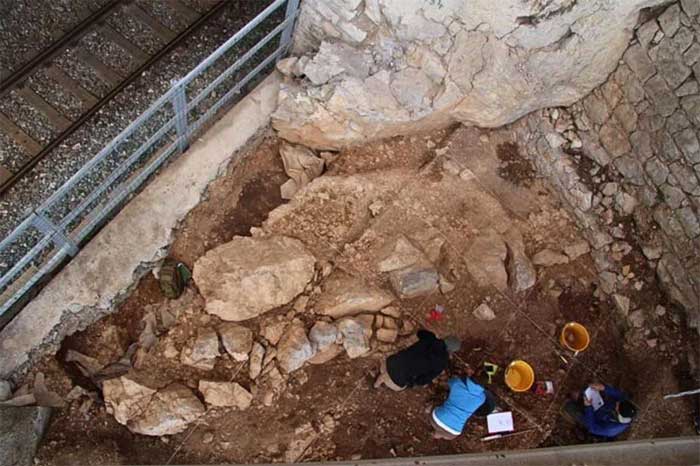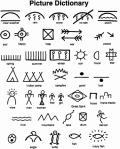In prehistoric caves inherited by modern Homo sapiens from other species, scientists have made a shocking discovery.
By mapping the distribution of stone tools, animal bones, ochre, and shells on the surface of the Riparo Bombrini site in Liguria (Italy), anthropologists indicate that ancient humans known as Neanderthals exhibited behaviors previously thought to be unique to modern humans. This includes the need to live in a clearly structured residential space that shows similarities among inhabitants.

The excavation at the Riparo Bombrini site in Italy reveals that Neanderthals arranged their living spaces similarly to modern humans – (Photo: ARCHEOLOGY MAGAZINE).
This discovery might seem unbelievable, as Neanderthals went extinct around 40,000 years ago, implying that the organized and clearly divided spaces they inhabited date back to that period or even earlier.
According to the archaeological team from the University of Montreal and the University of Genoa, the various caves of Neanderthals show consistency in spatial distribution.
They divided living areas into distinct high and low-intensity activity zones. Moreover, the locations of essential structures such as hearths and trash pits in the caves are also similar.
Interestingly, this spatial arrangement reflects a legacy shared between the two species.
In this area, the late Mousterian technology complex of Neanderthals is succeeded by the Protoaurignacian technology complex of modern Homo sapiens. Additionally, Homo sapiens continued to use similar cave layouts as their predecessors.
This suggests that the cognitive ability to organize space is not solely possessed by modern humans, contrary to previous beliefs.
The discovery adds to the extensive evidence showing that Neanderthals did not live like primitive beings but were more similar to us than we had ever imagined.
In recent years, archaeological evidence consistently indicates that tens of thousands of years ago, they knew how to weave fibers, create jewelry… They also organized separate facilities for butchering game and weapon crafting.
The Neanderthals – also known as Homo neanderthalensis – are believed to have appeared on Earth around 400,000 to 800,000 years ago. They belong to the same genus, Homo, as modern humans, Homo sapiens.
They had brains even larger than those of modern humans but were less flexible due to lacking certain connections, which suggests they were somewhat less developed than us.
Neanderthal and Homo sapiens communities interacted and interbred in the past; thus, modern humans today still carry about 2% of their DNA originating from this ancient species.





















































